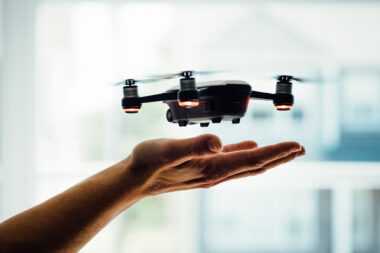Introduction
Portable ultrasound devices have revolutionized medical imaging by providing flexibility and convenience in various healthcare settings. These compact and lightweight devices offer real time, high quality imaging capabilities without the need for dedicated imaging rooms. Portable ultrasound technology has become a valuable tool for healthcare professionals, allowing them to perform diagnostic imaging at the bedside, in clinics, and even in remote or emergency settings.
These devices typically consist of a handheld transducer connected to a portable processing unit that features a display screen for real time imaging. Portable ultrasound devices are versatile, covering a range of medical applications, including obstetrics, cardiology, musculoskeletal imaging, and emergency medicine. Their ease of use, portability, and ability to deliver rapid diagnostic information make them an invaluable asset for healthcare providers seeking immediate insights into patient conditions without the constraints of traditional imaging modalities.
Working principal
The key components of a portable ultrasound system include a handheld transducer, a portable processing unit, and a display screen. Here’s a simplified explanation of their working principles:
- Transducer and Sound Waves:
- The handheld transducer is a crucial component that emits and receives ultrasound waves.
- It contains piezoelectric crystals that generate ultrasound waves when an electric current is applied to them.
- These waves travel into the body and interact with tissues, creating echoes.
- Echo Reception:
- As ultrasound waves encounter different tissues in the body, they reflect back to the transducer.
- The piezoelectric crystals in the transducer convert these returning echoes into electrical signals.
- Signal Processing:
- The portable processing unit processes the electrical signals received from the transducer.
- Signal processing involves amplifying, filtering, and converting the signals into digital information.
- Image Formation:
- The processed signals are used to create real time images on the display screen.
- The system interprets the time it takes for echoes to return and the strength of these echoes to generate detailed images of internal structures.
- Adjustable Settings:
- Portable ultrasound devices allow healthcare professionals to adjust settings such as depth, frequency, and gain to optimize imaging for different applications.
- Real Time Imaging:
- One of the key advantages of portable ultrasound devices is their ability to provide real time imaging.
- Healthcare professionals can observe moving structures, such as the heart or fetus, and make immediate diagnostic assessments.
- Portability and Flexibility:
- The compact and portable design of these devices allows for easy maneuverability and usage in various healthcare settings.
- They are often battery powered, enabling usage in locations without a stable power supply.
- Application in Point of Care:
- Portable ultrasound devices are frequently used at the point of care, enabling healthcare providers to perform bedside or immediate diagnostic assessments.
- They are employed in a range of medical specialties, including obstetrics, cardiology, musculoskeletal imaging, and emergency medicine.
- Wireless Connectivity:
- Some portable ultrasound devices come with wireless capabilities, allowing for easy sharing of imaging data and integration with electronic health record systems.
Algorithm
- Signal Generation:
- The process begins with the generation of ultrasound signals. This is achieved by applying an electric current to the piezoelectric crystals within the handheld transducer.
- The crystals deform and generate ultrasonic waves that propagate into the body.
- Transmission into the body:
- The generated ultrasound waves travel into the body, penetrating different tissues.
- Echo Reception:
- As the ultrasound waves encounter tissue boundaries or structures with different acoustic properties, they reflect back towards the transducer.
- Conversion of Echoes to Electrical Signals:
- The returning echoes reach the transducer, causing the piezoelectric crystals to deform.
- This deformation generates electrical signals that are proportional to the strength and timing of the received echoes.
- Signal Processing:
- The electrical signals are sent to the portable processing unit.
- Signal processing involves various steps, including amplification, filtering, and digitization.
- Adaptive filtering may be applied to enhance image quality by reducing noise.
- Beamforming:
- Beamforming is a crucial step in focusing the ultrasound beams to create a clear image.
- The system adjusts the timing and amplitude of the signals to steer the beams in specific directions.
- Image Formation:
- The processed signals are used to create a two dimensional image on the display screen.
- The system interprets the time it takes for echoes to return and their strength to generate detailed images of internal structures.
- Different shades or colors represent variations in tissue density.
- Adjustable Settings:
- Healthcare professionals can adjust imaging settings, such as depth, frequency, and gain, to optimize the image for specific diagnostic purposes.
- Real-Time Imaging:
- Portable ultrasound devices are designed to provide real time imaging, allowing healthcare professionals to observe moving structures, such as the beating heart or fetal movements.
- Display:
- The final processed image is displayed on the device’s screen in real-time.
- Interpretation and Diagnosis:
- Healthcare professionals interpret the images to make diagnostic assessments.
- Immediate feedback allows for on the spot decision making.
- Optional Storage and Sharing:
- Some portable ultrasound devices may have features for storing images or sharing them through wireless connectivity.
Signal generation, reception, processing, and image formation
1. Signal Generation:
- Piezoelectric Crystals: The process begins with the application of an electric current to the piezoelectric crystals within the handheld transducer.
- Deformation: The electric current causes the crystals to deform, generating ultrasonic waves.
2. Transmission into the body:
- Propagation: The generated ultrasonic waves travel into the body, penetrating different tissues.
- Interaction with Tissues: As the waves encounter tissues with varying acoustic properties, some of the energy is reflected back.
3. Echo Reception:
- Reflection: The reflected echoes return to the transducer.
- Piezoelectric Response: The returning echoes cause the piezoelectric crystals to deform again.
4. Conversion of Echoes to Electrical Signals:
- Generation of Electrical Signals: The deformation of the crystals generates electrical signals.
- Proportional to Echo Strength: The amplitude of the electrical signals is proportional to the strength of the received echoes.
5. Signal Processing:
- Transmission to the Processing Unit: The electrical signals are transmitted to the portable processing unit.
- Amplification: The signals undergo amplification to enhance their strength.
- Filtering: Filtering is applied to remove unwanted noise and artifacts.
- Analog to Digital Conversion: The analog signals are converted into digital form for further processing.
6. Beamforming:
- Adjustment of Signal Timing and Amplitude: The system adjusts the timing and amplitude of the signals to focus the ultrasound beams.
- Steering of Beams: Beamforming allows for steering the beams in specific directions for optimal image quality.
7. Image Formation:
- Data Interpretation: Processed signals are interpreted to create a two dimensional image.
- Pixel Creation: The pixels in the image represent different tissue densities based on the timing and strength of the echoes.
- Real Time Display: The final image is displayed on the device’s screen in real time.
8. Adjustable Settings:
- User Configuration: Healthcare professionals can adjust imaging settings.
- Depth, Frequency, and Gain: Parameters such as depth, frequency, and gain are adjustable to optimize the image for specific diagnostic needs.
9. Real-Time Imaging:
- Continuous Process: The entire process occurs continuously, enabling real time imaging.
- Observation of Moving Structures: Healthcare professionals can observe moving structures, facilitating dynamic diagnostic assessments.
10. Interpretation and Diagnosis:
- Immediate Feedback: The real time images provide immediate feedback for interpretation.
- Diagnostic Assessment: Healthcare professionals interpret the images for diagnostic assessments.
11. Optional Storage and Sharing:
- Storage: Some portable ultrasound devices offer options to store images for future reference.
- Wireless Connectivity: Images can be shared through wireless connectivity for collaborative diagnostics.
Conclusion
The intricate dance of signal generation, reception, processing, and image formation in portable ultrasound devices represents a technological symphony dedicated to real time medical diagnostics. This dynamic process, seamlessly woven into a compact and mobile design, empowers healthcare professionals with immediate insights at the point of care. The portable ultrasound algorithm stands as a testament to the relentless pursuit of precision and efficiency in modern medical imaging, providing a valuable tool for on the spot diagnostic assessments across diverse clinical scenarios. As technology continues to advance, the synergy of ultrasound principles and portability paves the way for enhanced patient care and diagnostic agility.



